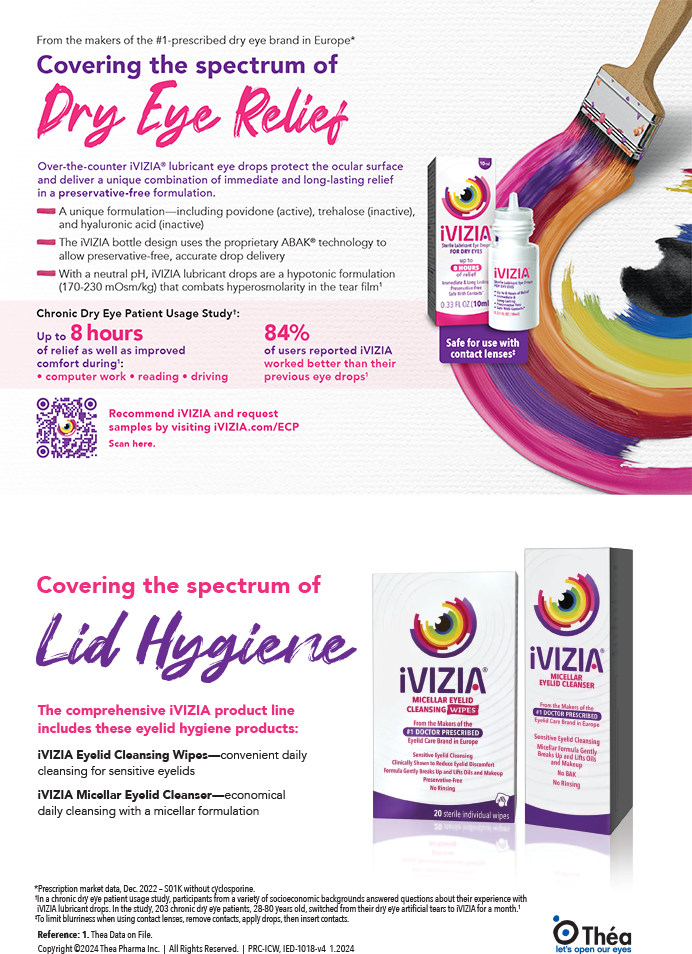
Patients are transitioning from passive recipients to active, empowered participants in their care. The shift toward consumerism in health care is characterized by patient demand for the same convenience, transparency, and affordability they find in other sectors. Fueling the shift is greater public access to medical information and online health services that were previously exclusive to health care professionals. In response, health care entities are reimagining care delivery, embracing digital solutions, and leveraging data to cater to the evolving needs of their patients.
AT A GLANCE
- Health care is transitioning to a consumer-driven model as patients demand the same level of convenience, transparency, and affordability they experience in other sectors.
- Refractive practices must adapt by embracing patient-centered strategies and integrating digital technologies to meet changing expectations.
Refractive practices are not immune to these changes. To adapt, they must adopt health care consumerism and patient-centered strategies.
Understanding Health Care Consumerism
Health care has been a domain where doctors provide advice that patients follow. Health care consumerism disrupts this dynamic, with consumers actively engaging in their care and demanding transparency, access to their personal health data, and efficiency. For practices, this means adopting a collaborative culture with real-time communication and digital infrastructure, such as telehealth and online appointment scheduling, to enhance patient engagement.
Key factors driving health care consumerism include the rise of high-deductible health plans, which increase consumers’ financial responsibility and their scrutiny of costs. The availability of health information and self-management tools, moreover, allows patients to take greater control of their health care.
Strategies for Embracing Health Care Consumerism
Taking a comprehensive approach. Refractive practices that want to thrive in the consumer-driven health care landscape must embrace the shift toward consumerism and become more patient-centric in their approach. They must tailor their services to meet patients’ needs and expectations, embrace technology to improve the care experience, and become more transparent about pricing and outcomes.
One way to achieve this is by creating a comprehensive patient engagement strategy that includes a variety of touchpoints throughout the care journey. This could include digital tools such as patient portals, texting, and telehealth as well as in-person communication, such as educational seminars and patient forums. Practices can also embrace data-driven insights to better understand patient behavior and preferences and improve clinical outcomes.
Empowering the patient. Empowered patients proactively seek information. They take responsibility for their own well-being instead of relying solely on health care providers to solve all of their health issues. Empowered patients also seek out information about their health conditions and treatment options, and they are more likely to ask questions and voice concerns to their health care providers.
Another key aspect of patient empowerment is valuing convenience, accessibility, and transparency. Empowered patients want health care services that are easy to access, offer flexible scheduling, and are transparent about costs and treatment plans. They may also prefer virtual visits or telemedicine options that allow them to receive care from the comfort of their own homes. By valuing convenience and accessibility, empowered patients are more likely to seek out and receive the care they need and are more satisfied with their overall health care experience.
Elevating the patient experience. The patient experience encompasses all interactions and impressions with a health care brand. In a competitive market, delivering exceptional patient experiences is crucial for practice growth and patient loyalty. This requires a patient-centric culture among all team members to ensure quality experiences at every touchpoint.
Overcoming challenges
The shift toward consumerism presents challenges such as increased competition and the need for advanced data analytics. Practices must invest in the necessary tools and technologies for success in the digital era, including adopting new payment models aligned with value-based care.
Conclusion
Refractive practices that embrace the shift toward health care consumerism by adopting a patient-centric approach are poised for success. By leveraging technology, fostering patient collaboration, and utilizing data-driven insights, refractive practices can meet changing consumer needs, grow, and position themselves for success in the consumer-driven health care landscape.




